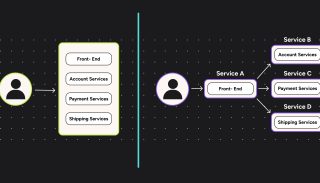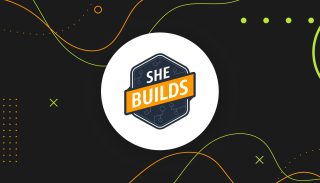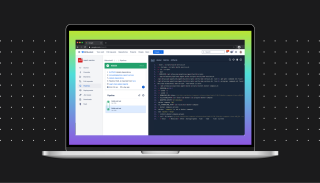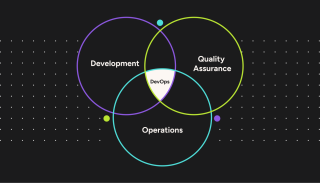As a technology leader, you’re constantly bombarded with the “next big thing.” Right now, that’s Generative AI. But beyond the hype, what can it actually do for your business? How does it translate from a cool tech demo into tangible results like increased revenue, better customer engagement, and streamlined operations? At Atlantic BT, we don’t chase trends; we implement solutions. That’s why we’re excited about AWS Bedrock, a powerful tool from Amazon Web Services that allows us to build custom generative AI solutions for our clients. It’s not about replacing your team; it’s about empowering them with tools that work smarter.
Let’s move past the abstract and talk about what this means for you.
Use Case 1: AWS Bedrock for Hyper-Personalized E-commerce
The Goal: Move beyond generic product recommendations to create a shopping experience that feels uniquely tailored to each individual customer, boosting engagement and average order value.
- For Your Marketing Director: Imagine dynamically generating SEO-friendly product descriptions that highlight the features most relevant to different customer segments.
- For Your Sales Team: Picture a recommendation engine that understands context, suggesting relevant add-ons and accessories to increase average order value automatically.
How We Build It:
This isn’t about a single AI call; it’s about creating an intelligent data pipeline.
- Data Foundation: We start with your existing customer data: purchase history, browsing behavior, and product catalogs that are stored securely in a service like Amazon S3 or a database.
- Creating Context with RAG: The real magic is a technique called Retrieval Augmented Generation (RAG). We use Amazon Titan Text Embeddings (a model within Bedrock) to convert your product information and customer profiles into numerical representations (vectors). This allows the AI to understand the relationships between products and customers in a nuanced way.
- The User Interaction: When a customer lands on a product page, our application sends their profile vector and the product’s vector to a powerful language model like Anthropic’s Claude via the Bedrock API.
- The Prompt: The prompt we send isn’t just “write a description.” It’s highly specific: “You are a helpful shopping assistant. Based on this customer’s profile [customer vector] and this product’s details [product vector], generate a 50-word description that highlights the features most relevant to them. Then, suggest three complementary products from our catalog that they are likely to need.”
- The Result: Bedrock returns a personalized description and a list of relevant product IDs, which we then display on your website. The entire process is secure, scalable, and happens in milliseconds.
Use Case 2: AWS Bedrock as Your Marketing and Content Co-Pilot
The Goal: Dramatically accelerate your content creation process while maintaining brand consistency, freeing up your marketing team to focus on high-level strategy. This is how we build a tool that becomes your marketing team’s new secret weapon.
How We Build It:
We create a custom web application that acts as a central hub for your marketing team’s AI-powered tasks.
- Fine-Tuning for Your Brand Voice: A generic AI sounds, well, generic. To solve this, we use AWS Bedrock’s fine-tuning capabilities fine-tuning capabilities. We take a base model, like Cohere Command, and train it on your existing high-quality content: successful blog posts, brand guidelines, and marketing emails. This creates a private, custom model that inherently understands your tone, style, and terminology.
- Building the Interface: We develop a simple, intuitive web interface where your team can select a task (e.g., “Blog Post Outline,” “Social Media Campaign”).
- Structured Prompts: For a “Blog Post Outline,” the interface would ask for a topic, target audience, and key takeaways. Our application then constructs a detailed prompt for your fine-tuned model: “Acting as a senior content strategist for [Your Company Name], create a detailed outline for a blog post on the topic of ‘[Topic]’ for an audience of ‘[Audience]’. The outline should include an H1, three H2s with bullet points, and a concluding paragraph that reinforces our brand message about [Brand Message].”
- Content Generation and Iteration: Bedrock processes the request and returns a structured outline. The interface allows your team to review, edit, and even ask for revisions (“Make the tone more casual” or “Add a section on pricing”), creating a collaborative workflow between your team and their AI assistant.
Use Case 3: The Next-Generation Customer Support Assistant
The Goal: Resolve customer issues faster and more accurately, reducing the load on your human support agents and improving overall customer satisfaction. For a Head of Support, this means lower resolution times and higher CSAT (Customer Satisfaction Score) scores .
How We Build It:
This solution leverages a feature called Agents for Amazon Bedrock, which orchestrates complex, multi-step tasks.
- Defining the Agent’s Tools: First, we give the agent access to your business systems through secure APIs. These are its “tools.” For example, we’d create an API to lookupOrderStatus(orderId) and another to getReturnPolicy(productCategory).
- Creating a Knowledge Base: We connect the agent to a Knowledge Base for Amazon Bedrock. This is where we load all of your support documentation, FAQs, and product manuals. The agent will use this RAG-powered knowledge base to answer informational questions.
- Orchestration Logic: When a customer starts a chat and asks, “I want to return the shoes from my last order,” the agent kicks into action.
- Reasoning: The agent’s underlying language model (like Meta Llama 3) reasons that it needs the customer’s order ID. It asks the user for it.
- Action: Once the ID is provided, the agent calls the lookupOrderStatus() API to find the order details, including the shoe category.
- Knowledge Lookup: It then queries the Knowledge Base using the shoe category to find the specific return policy.
- Response Generation: Finally, it synthesizes all this information into a helpful, natural language response: “I’ve found your order from last week. Our policy for shoes allows for returns within 30 days. Here is the link to start your return process.”
From Potential to Production
As you can see, implementing effective AI is not about simply plugging into an API. It’s about thoughtful architecture, understanding your business data, and crafting precise instructions for these powerful models.Generative AI is here, and it’s already creating a competitive advantage for businesses willing to explore it. The question is no longer if you should adopt AI, but how.












